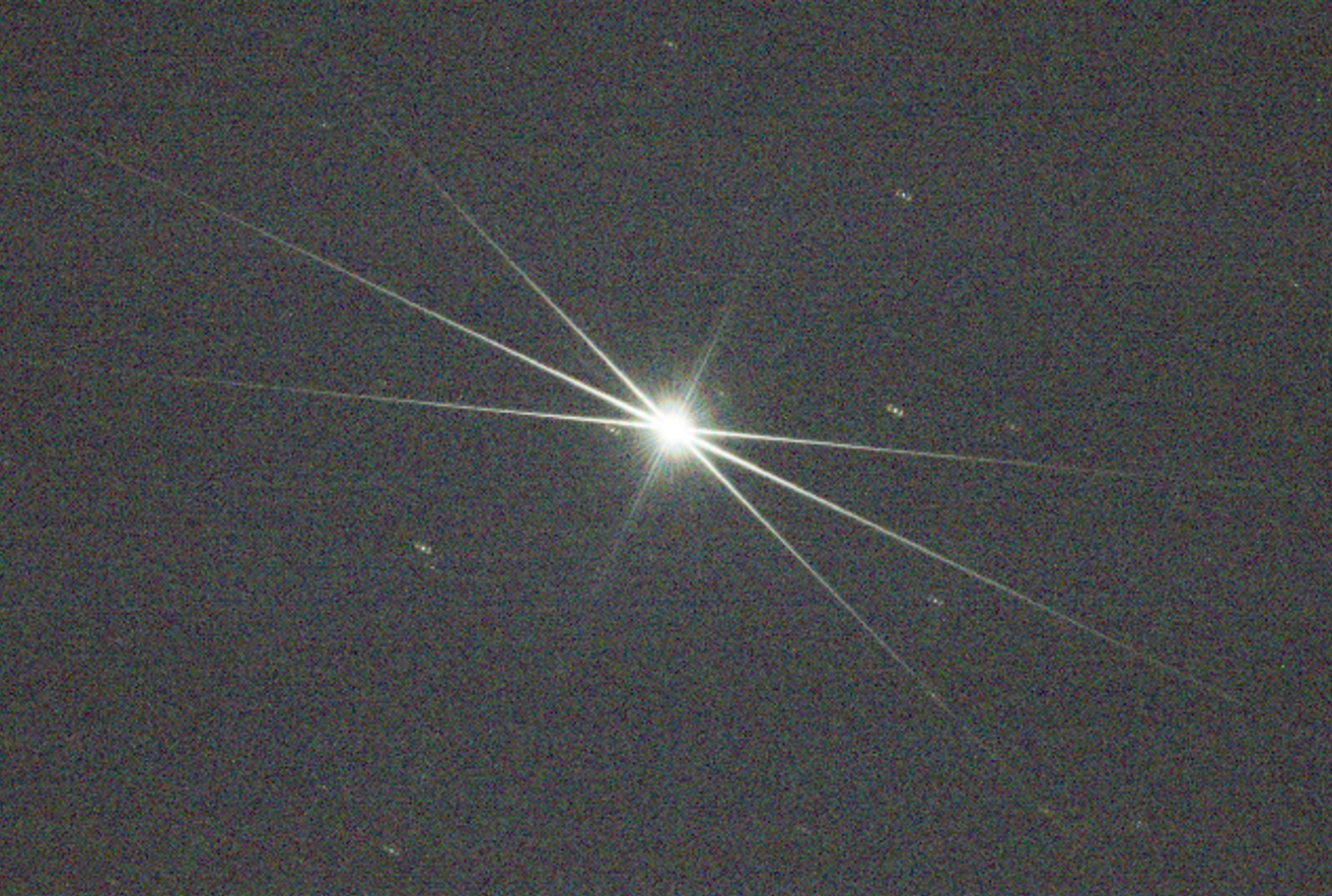Focusing with the Bahtinov-mask
It is often difficult to estimate when a chip is really in the focus point. For this, there is a simple auxiliary component, the Bahtinov-mask, which is placed in front of the telescope aperture for focusing.
 Source: Kapege.de, Public domain, via Wikimedia Commons
Source: Kapege.de, Public domain, via Wikimedia Commons
These are available in many sizes, so that a suitable one can be found for every telescope.
Focusing can be performed directly with the so-called "Easy Align".
For the computer-assisted tracking, the software of the mount must be aligned with the starry sky. After entering the location and time, the telescope automatically moves to two stars by selection in the menu of the hand control box, which must be confirmed. (To invoke the command, follow the instructions in the respective manual of the mount). When the mount has moved to the first star, it starts tracking at the same time.
Using the mirror adjustment on the telescope (Schmidt-Cassegrain) or the focuser, the focal point can now be brought approximately into the chip plane. For beginners, some practice and patience is necessary here. When the first bright stars are slowly brought into focus on the display, the bright target star selected by the "Easy Align" is centered in the image using the hand control box. Now the Bahtinov mask should be mounted.
The bright target star is displayed on the screen with a ray-shaped pattern. To display this, the program N.I.N.A. can be used, for example, by activating the menu point 'Capturing' there.
 Chip plane is not yet at the focal point of the telescope
Chip plane is not yet at the focal point of the telescope
The goal now is to move the center beam via the eyepiece extension knobs or the mirror adjustment so that it crosses with the other two beams at one point.
 Chip plane is at the focal point of the telescope - Focusing is completed
Chip plane is at the focal point of the telescope - Focusing is completed
Once this is achieved, the focus point is found and the Bahtinov-mask can be removed again. Then the "Easy Align" is continued with the second star to complete the alignment between telescope location and starry sky.
If it is foreseeable that the temperatures will drop very strongly during the night, a small amount can be adjusted beyond the focus point, so that the focus point does not drift too far away from the optimum in case of a strong tube shortening due to temperature change.